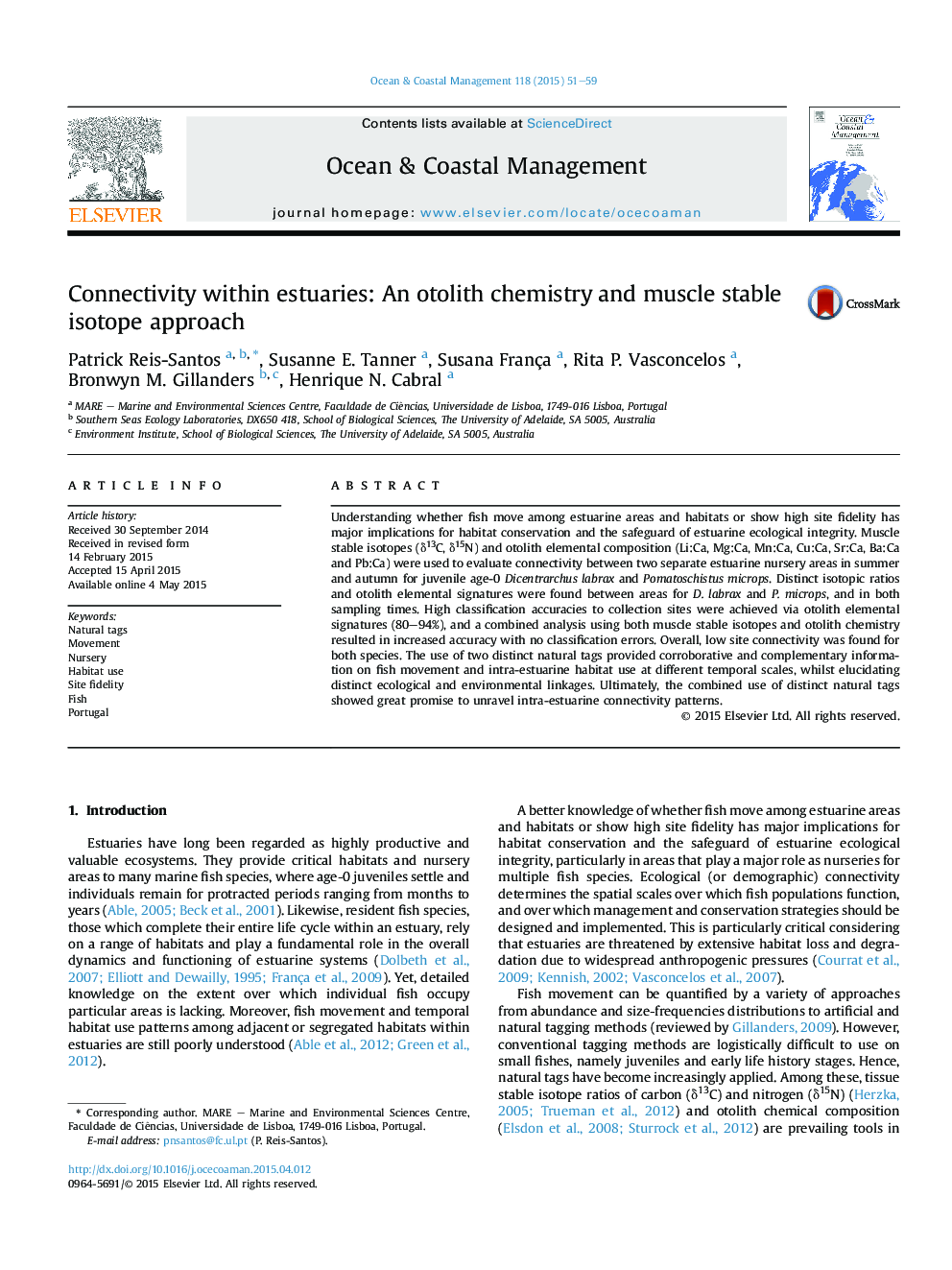| Article ID | Journal | Published Year | Pages | File Type |
|---|---|---|---|---|
| 1723409 | Ocean & Coastal Management | 2015 | 9 Pages |
•Connectivity between estuarine nursery habitats was evaluated for two fish species.•Muscle stable isotopes and otolith elemental composition were used as natural tags.•Low connectivity was found for both analysed fish species and life histories.•The integrated use of distinct natural tags enhanced the connectivity assessment.•The complementarity and contrasting attributes of both natural tags was highlighted.
Understanding whether fish move among estuarine areas and habitats or show high site fidelity has major implications for habitat conservation and the safeguard of estuarine ecological integrity. Muscle stable isotopes (δ13C, δ15N) and otolith elemental composition (Li:Ca, Mg:Ca, Mn:Ca, Cu:Ca, Sr:Ca, Ba:Ca and Pb:Ca) were used to evaluate connectivity between two separate estuarine nursery areas in summer and autumn for juvenile age-0 Dicentrarchus labrax and Pomatoschistus microps. Distinct isotopic ratios and otolith elemental signatures were found between areas for D. labrax and P. microps, and in both sampling times. High classification accuracies to collection sites were achieved via otolith elemental signatures (80–94%), and a combined analysis using both muscle stable isotopes and otolith chemistry resulted in increased accuracy with no classification errors. Overall, low site connectivity was found for both species. The use of two distinct natural tags provided corroborative and complementary information on fish movement and intra-estuarine habitat use at different temporal scales, whilst elucidating distinct ecological and environmental linkages. Ultimately, the combined use of distinct natural tags showed great promise to unravel intra-estuarine connectivity patterns.
